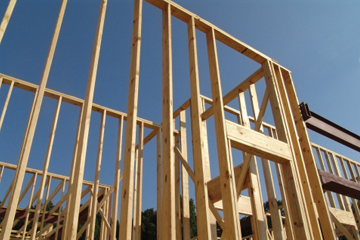Supply in construction
‘Supply’ is the flow of resources used to satisfy a demand, such as materials, labour, information, skills, and so on. It can also refer to competencies or combinations of resources. In very general terms, commodity suppliers tend to be more price focused, whilst strategic suppliers are more quality/delivery focused.
As an economic concept, supply can relate to the amount that is available at a specific price, or the amount that is available across a range of prices. Goods and services all have their own supply and demand patterns based on the principle that if the market demands something and consumers are willing to pay more for it, producers will add to the available supply. As the supply increases, the price falls provided there is the same level of demand until (in theory at least) an equilibrium point is reached at which the supply equals the demand and there is neither any wasted supply or shortages.
In the construction industry, the term ‘supplier’ refers to organisations contracted as part of the delivery of a built asset. Traditionally, suppliers were considered to be organisations contracted to provide physical supplies such as goods, materials, plant, and so on; however, use of the term is now much broader and PAS 1192-2 defines a supplier as any ‘…provider of services or goods either directly to the employer or to another supplier in a supply chain’.
For more information see: Supplier.
The term 'supply chain' refers to the interconnected hierarchy of supply contracts necessary to procure a built asset. Managing the supply chain involves understanding the breakdown and traceability of products and services, organisations, logistics, people, activities, information and resources that transform raw materials into a finished product that is fit for its purpose.
For more information see: Supply chain.
Supply chain management requires a holistic perspective and a view of organisations as parts of a process. It requires the ability to look beyond organisational boundaries, and a recognition of interdependencies.
NB The term ‘supply’ can also refer to the transmission of utilities through a network, for example, an electricity supply, water supply and so on.
[edit] Related articles on Designing Buildings Wiki
Featured articles and news
Key points for construction at a glance with industry reactions.
Functionality, visibility and sustainability
The simpler approach to specification.
Architects, architecture, buildings, and inspiration in film
The close ties between makers and the movies, with our long list of suggested viewing.
SELECT three-point plan for action issued to MSPs
Call for Scottish regulation, green skills and recognition of electrotechnical industry as part of a manifesto for Scottish Parliamentary elections.
UCEM becomes the University of the Built Environment
Major milestone in its 106-year history, follows recent merger with London School of Architecture (LSE).
Professional practical experience for Architects in training
The long process to transform the nature of education and professional practical experience in the Architecture profession following recent reports.
A people-first approach to retrofit
Moving away from the destructive paradigm of fabric-first.
International Electrician Day, 10 June 2025
Celebrating the role of electrical engineers from André-Marie Amperè, today and for the future.
New guide for clients launched at Houses of Parliament
'There has never been a more important time for clients to step up and ...ask the right questions'
The impact of recycled slate tiles
Innovation across the decades.
EPC changes for existing buildings
Changes and their context as the new RdSAP methodology comes into use from 15 June.
Skills England publishes Sector skills needs assessments
Priority areas relating to the built environment highlighted and described in brief.
BSRIA HVAC Market Watch - May 2025 Edition
Heat Pump Market Outlook: Policy, Performance & Refrigerant Trends for 2025–2028.
Committing to EDI in construction with CIOB
Built Environment professional bodies deepen commitment to EDI with two new signatories: CIAT and CICES.
Government Grenfell progress report at a glance
Line by line recomendation overview, with links to more details.
An engaging and lively review of his professional life.
Sustainable heating for listed buildings
A problem that needs to be approached intelligently.
50th Golden anniversary ECA Edmundson apprentice award
Deadline for entries has been extended to Friday 27 June, so don't miss out!
CIAT at the London Festival of Architecture
Designing for Everyone: Breaking Barriers in Inclusive Architecture.
Mixed reactions to apprenticeship and skills reform 2025
A 'welcome shift' for some and a 'backwards step' for others.



























